- News
- Reviews
- Bikes
- Components
- Bar tape & grips
- Bottom brackets
- Brake & gear cables
- Brake & STI levers
- Brake pads & spares
- Brakes
- Cassettes & freewheels
- Chains
- Chainsets & chainrings
- Derailleurs - front
- Derailleurs - rear
- Forks
- Gear levers & shifters
- Groupsets
- Handlebars & extensions
- Headsets
- Hubs
- Inner tubes
- Pedals
- Quick releases & skewers
- Saddles
- Seatposts
- Stems
- Wheels
- Tyres
- Tubeless valves
- Accessories
- Accessories - misc
- Computer mounts
- Bags
- Bar ends
- Bike bags & cases
- Bottle cages
- Bottles
- Cameras
- Car racks
- Child seats
- Computers
- Glasses
- GPS units
- Helmets
- Lights - front
- Lights - rear
- Lights - sets
- Locks
- Mirrors
- Mudguards
- Racks
- Pumps & CO2 inflators
- Puncture kits
- Reflectives
- Smart watches
- Stands and racks
- Trailers
- Clothing
- Health, fitness and nutrition
- Tools and workshop
- Miscellaneous
- Buyers Guides
- Features
- Forum
- Recommends
- Podcast
feature
Budget gravel bike vs premium gravel bike vs mountain bike: Does the bike make any difference?
On the road it’s widely believed that performance comes down to the rider rather than equipment. It’s not about the bike, and all that. But what about when you’re gravel riding? Can a better bike or position really make a meaningful difference? To find out we’ve pitted a budget gravel setup against both a premium gravel bike and a range-topping XC hardtail mountain bike… Which one will we be reaching for in the shed when the time comes to (gulp) ride a 215km gravel epic?
> Best gravel bikes under £1,000 2023 — go beyond the tarmac for less
Many of us have a tendency to blame our kit when things don’t go our way. For me, anyway, that spot of deflection and blame tossing occurs, more often than not, when I’m riding gravel. If I get dropped, or there’s a section I just can’t ride, then the first thing I do is make sure everyone within earshot knows that the key factors behind my untimely demise are my tyres, or my position or gearing… or basically whatever apparently malfunctioning part of my bike pops into my head first.
Well, to find out whether my (fairly frequent) moaning is at all justified, our resident gravel expert Suvi will be helping me work out just how much difference, if any, your bike makes when riding the rough stuff.
The question of whether to spend a little, or a lot on a gravel bike, or to even purchase a hardtail mountain bike instead, is one that many budding gravel riders ask themselves when setting out – but it’s also one which doesn’t appear to have a clear-cut answer.
To help us get to the bottom of this very 21st-century dilemma, Suvi has kindly (well, I say kindly) entered us into the gruelling 215km Ekoi Stone Circle gravel event, my longest ever off-road adventure and with an estimated finish time of 10 hours, quite possibly my longest time in the saddle ever.
> Best gravel bikes under £2000 2023 — off-road, drop bar bikes that balance performance and price
So, what kind of bike should I be choose to help me get through a full day of rough terrain and excruciating pain in Wiltshire?
The bikes we’ve selected for this particular test might seem like quite the eclectic mix. And well, to be fair, they are. UK gravel covers a wide range of terrain and it’s clear that the bike you’re riding is going to impact not only your speed but also your enjoyment and ability to keep pedalling. Just take a quick look around any UK gravel event and you’ll be blown away by the variety of bikes and equipment choices on show – ranging from cyclocross bikes to hardtail mountain bikes and, of course, the hugely varying definitions of what constitutes a gravel bike these days.
With all that in mind, we wondered how much you’re actually putting yourself at a disadvantage (if at all) by being on the ‘right’ or ‘wrong’ kind of bike, be it cheap or expensive, drop bar or flat bar. Does all of that even matter when it comes to gravel?
The budget gravel bike
First up, and in the slightly greeny blue corner, we have a Marin Nicasio+, an excellent representation of a good-value gravel bike. It’s got an RRP of £1,045, a Microshift 1x9 groupset, cable pull disc brakes, a steel frame, and 650b wheels fitted with rather slick 47mm tyres.
The Nicasio+ is a bike that has been rated by multiple sites as an excellent budget-friendly gravel bike and scored a strong 7/10 in our review.
Ride Impressions
+ The price
+ Geometry suited to on and off-road
+ Fun and capable on gravel
- Cable pull disc brakes
- Big jumps in between gears
- Vibration dampening is inferior to carbon
- Weighty (13.1kg)
Any entry-level gravel bike is surely going to sacrifice some functionality or performance, such as weight, but will it actually make gravel riding any less enjoyable or slower?
> The ultimate guide to frame materials: what's best for bikes?
The first thing I noted is that there is a fair bit of vibration coming up through the bars, even with the 650b wheels and wide 47mm tyres. That’s most likely because both the frame and the fork are made of steel and the handlebar is aluminium. I have absolutely nothing against alloy bikes and components, in fact, I absolutely love my Aluminium Allez Sprint – but recent carbon frames have exceptional vibration-damping characteristics that are simply hard to match and on gravel, this becomes even more apparent.
Unfortunately, at around the £1,000 mark, carbon gravel bikes are simply impossible to find. In fact, you’d be hard-pressed to find even a second-hand carbon gravel bike for that kind of money. On endurance gravel rides (lasting over three hours or so) a good carbon frame will often offer more vertical compliance and leave you feeling less beat up.
> 8 tips to get started with gravel riding
Alloy bikes do have their perks though. For example, their impact strength is an important factor in why many ultra-endurance athletes opt for them, and if you’re sticking to well-laid gravel or only plan on going out for a few hours then they probably make more financial sense.
The next thing you need to think about when buying an entry-level gravel bike is the gears. This one comes with a nine-speed Microshift groupset. Well, I say Microshift, but the brakes are actually Tektro (more on them in a minute), the cassette is Sunrace, and the chain is KMC.
Despite having fewer gears, bikes like the Nicasio+ can offer plenty of range. This Marin, for example, has a 42 tooth ring up front and an 11-46 tooth cassette – that gives plenty of bail-out gears when the climbs get steep, and provides even lower ratios than even Suvi is afforded on her super fancy gravel bike, in fact.
The fewer gears do mean that the jumps between them are larger, so you might find yourself struggling to find the ideal cadence. This is most noticeable on long drags, whether on tarmac or fire roads, and it’s something you soon get used to and probably wouldn’t even notice unless you’re doing a back-to0back test like this.
The Nicasio+, like many entry-level gravel bikes, features cable-pull disc brakes and after riding all three bikes for countless miles both Suvi and I agreed that cable-pull disc brakes are simply inferior to their hydraulic counterparts. Over time, especially on gravel, mud and dirt can ingress into the moving parts and brake outers, making them stiff to operate.
> Bike gears: find out why bikes have so many, and the surprising way they're measured
This is an area where you definitely get what you pay for – cable pull disc brakes do get the job done but are hard to compare to a dialled-in set of hydraulic callipers in terms of power and modulation. How this affects your descending confidence will vary from person to person, but for both of us it did make a marked difference.
On the whole, the bike was very good. Riding bikes is fun and this one is no exception. On the flat in particular it didn’t feel any slower than vastly more expensive options, and more than anything highlighted the overarching importance of tyre choice when riding off-road.
Premium gravel bike
> Review: Lauf Seigla Weekend Warrior Wireless
The Lauf Seigla seriously impressed us when it launched last year and earned an impressive 9/10 review. Whilst there are plenty of gravel bikes out there that cost more than this, in its current build, with 1x Sram Force AXS, it certainly fits the bill of being a high-end gravel bike.
The Lauf Grit fork at the front offers just under 30mm of travel and the rear has also been designed to offer compliance. This build features Schwalbe G-One R 45mm tyres fitted to the lightweight carbon EThirteen XCXR wheels.
Ride Impressions
+ Electronic shifting
+ Massive tyre clearances
+ Suspension/compliance
- In this build it's about £3,000 more expensive than the Marin
More and more modern gravel bikes are capable of fitting super wide tyres and with space for up to 57mm rubber, the Seigla is certainly one of them. Before buying any bike it’s important to consider tyre size, which will of course vary depending on your favoured terrain. For light gravel around 40mm should be enough, but both Suvi and I opt for 42-45mm rubber for the majority of our mixed terrain gravel rides.
> Staff Bikes: Jamie's customised Lauf Seigla
With a set of wide tyres, front suspension, rear frame compliance, and carbon handlebars, the Seigla does a remarkable job of soaking up the high-frequency buzz. Brands have put a lot of time and effort into tuning the carbon layups of their premium gravel bikes and on long rides this additional compliance is certainly welcome.
One other difference that you’ll find on premium gravel bikes is electronic gear shifting. In fact, the Seigla only ships with electronic gearing. Whether electronic gears are necessary is a debate that has rumbled on for over a decade, but it’s now generally accepted that electronic shifting does offer superior performance.
> 7 reasons why you should get electronic shifting
We asked Suvi what she thought about her fancy electronic gears and she noted that although “they’re by no means a must, they do feel quick and accurate so I’m always confident I’m in the right one at the right time”.
Electronic gears might not make you any faster but compared to the 9-speed Microshift, the 12-speed Sram groupset had far smaller gaps in between gears, resulting in greater choice. It was also easier to use them over rough terrain thanks to large ergonomic buttons, while the possibility to change multiple gears at once was also useful on steep technical ramps.
Whether you opt for electronic shifting will likely come down to personal preference and your budget. The good news is that they’re coming down in price, evidenced, for example, by Sram’s new, affordable Apex AXS.
> Best gravel wheelsets 2023 - fast and furious off-road wheels
The Seigla is also fitted with a wheelset that is roughly 800g lighter than that on the Nicasio+, which helps the bike to feel much more reactive and lively.
Suvi and I both agree that, while you don’t need to go out and drop a load of money on a carbon wheelset as posh as these EThirteen XCXRs, you will find a performance advantage by upgrading most stock wheelsets with some of the best value aluminium wheels.
Hardtail mountain bike
> Gravel bike vs mountain bike: what are the differences?
Representing hardtail mountain bikes is an almost ‘money no object’ build, the Factor Lando HT – we really did raid the off-road.cc lockers for this one! The carbon frame features carbon 29” Black Inc. wheels, an integrated cockpit, a 12-speed Sram Eagle XX1 groupset, and 2.25-inch tyres.
Ride Impressions
+ Control from wide bars
+ Technical descending speed
+ Tyre volume
+ Opens up more trails/riding routes
- Aero penalty/draggy on road or fast sections
- Flat bars limit hand positions on long rides
You might have heard people say that today’s gravel bikes are getting more and more like mountain bikes, and the lines are certainly blurring. Suspension and wide tyres can be found on both, and weights can often be similar, but a key distinction is of course the shape of the handlebars.
Cyclists have been riding mountain bikes on fire roads before the concept of “gravel riding” was even out of nursery, and judging by some of the recent gravel races I’ve attended, they’re pretty darn quick!
A mountain bike is, basically, a gravel bike on steroids. Where gravel bikes have slacker angles than a road bike, a mountain bike takes that one step further. Where you’re sat more upright and over the back wheel on a gravel bike, again mountain bikes take that upright position and times it by 10.
> Are gravel bikes old-school mountain bikes?
This more relaxed position is great for technical rocky descents and also means that your lungs are more open when climbing. However, the negatives come into play when you’re travelling at speed, like on a tarmac section on the way to the gravel, for example. The more upright position is less aerodynamic and so it takes more watts/effort to travel at the same speed.
Then there are the tyres. Our mountain bike is fitted with 2.25 inch Goodyear tyres, which is a fairly typical measurement for MTB rubber. That translates to 57mm, the very maximum that the Seigla will take and more than will fit on most other gravel bikes.
High-volume tyres can be run at lower pressures and are excellent at soaking up rocks, bumps, and roots. A more aggressive tread pattern wraps around the tyre more and is much more effective in wet mud and loose terrain. The downside is again speed, the wider knobbly tyre proving far more draggy on smooth surfaces.
Telescopic forks are another area that has been nicked from mountain bikes, but whereas gravel bikes typically offer around 30mm of travel, XC mountain bikes will usually boast 100-120mm, often with loads of opportunity to tune the rebound and compression. Most forks offer at least some capability to lock them out or make them solid so that the bike is more efficient when climbing.
100mm of travel and super high volume tyres are likely unnecessary for most gravel riding but it does open up more routes and with a weight penalty of only around a kilo it likely won’t hold you back too much, if at all.
The flat bars are far wider than even the widest drop bars you’ll find, and that provides oodles of control. The downside is aerodynamics: not everyone’s priority when riding gravel, of course, but the more upright position combined with the draggier tyres did have a noticeable impact on the effort required to sustain speeds of around 25kph-plus on both fast fire roads and tarmac sections.
Also, on a super long ride flat bars are more restrictive when it comes to hand positions and after a few hours I was looking for somewhere else to put my hands.
If your gravel is chunky or slower rolling, then this is probably the bike to be on. It climbs just as quick thanks to the ‘lungs open’ position and huge gear range, is faster at descending anything technical, and it’s a lot of fun on the twisty stuff – I was certainly able to ride more trails on this bike than the other two.
Conclusion
After having a good play on all the bikes, it was time to decide which I’d be earmarking for the tne hour, 215km-long Ekoi Stone Circle gravel event.
I doubt many people will be surprised to find out that I selected the premium gravel bike, the Lauf Seigla. But, in any case, here’s why...
> How much slower is a gravel bike on the road? Testing a road bike vs a gravel bike for speed
Whatever you spend on a bike for riding gravel it's absolutely possible to have a lot of fun, and in our experience there is little correlation between price and enjoyment. However, for the 215km event, there were a few limitations of the budget gravel bike that I concluded would hold me back in terms of performance.
Firstly, there’s the weight. The budget gravel bike is around 4.5kg heavier than the premium one and with 2,600m of elevation gain, this will have a negative effect. Secondly, the cable pull disc brakes were a drawback – I felt much more confident using the hydraulic setup with more power and modulation.
Factors such as the mechanical shifting, fewer gears, and harsher ride feel from the alloy frame would be easy for me to get past and simply come part and parcel with spending less on a bike. If there’s one area that Suvi and I recommend spending more of your hard-earned on, it’s hydraulic disc brakes.
The mountain bike might seem like an odd choice for a gravel event, but I do think that more ‘gravel’ riders should consider one. If you’re not interested in flat-out speed and are lucky enough to enjoy gravel rides without an abundance of tarmac sections, then the upright position, high-volume tyres, and suspension can offer more comfort, control, and confidence than even the very best gravel bikes out there.
In this case, it was the 35km of road and limited hand positions over a 9.5-hour ride that put me off using it.
Buying Advice
So, what did we learn? Well, the bike you’re riding does indeed make a difference to your technical ability and speed, but the right bike for you will of course depend on the type of gravel you ride and your budget.
Whilst a budget gravel bike may hold you back a little in terms of performance, it does still come down to your legs and technical ability. We reckon that the sub £2,000 gravel bikes do give away speed due to their weight, limited gears, and cable-pull disc brakes. Beyond that though you’re experiencing seriously diminishing gains, and whether you spend £3,000 or £10,000 we reckon you’d be hard-pressed to measure any performance advantage in the real world.
> Best gravel bikes 2023 — adventure-ready rides for leaving the tarmac behind
If you're looking to buy a new bike to ride on gravel, then here are some things to consider:
- Buy a bike with a frame which you can upgrade over time. It's far easier to upgrade wheels and components over time than it is a frame!
- Tyre choice is more important than bike choice. Getting the right volume and tread pattern for the type of riding you do will make a huge difference to your speed and confidence (the right tyres for you will rarely be the ones which come on the bike).
- Go tubeless. Many budget gravel bikes come with tubeless-ready wheels and tyres. Take advantage of this and don't pinch tubes!
- Hydraulic disc brakes. If you can afford to get a gravel bike with hydraulic disc brakes then we think it's an upgrade worth considering.
- Electronic gears are nice but not necessary.
- Don't discount mountain bikes. Gravel bikes are all the craze right now and often carry inflated price tags because of this. If speed or performance on tarmac isn't a priority then a mountain bike might be the gravel bike for you...
Do you think your bike holds you back off-road or are you a firm believer in only bad workmen blaming their tools? Let us know in the comments section below...
Jamie has been riding bikes since a tender age but really caught the bug for racing and reviewing whilst studying towards a master's in Mechanical engineering at Swansea University. Having graduated, he decided he really quite liked working with bikes and is now a full-time addition to the road.cc team. When not writing about tech news or working on the Youtube channel, you can still find him racing local crits trying to cling on to his cat 2 licence...and missing every break going...
Latest Comments
- Miller 1 sec ago
I have known more than one elder statesman of the club die of a heart failure while out on a ride. Sometimes I feel that's about to happen to me,...
- Pub bike 17 min 3 sec ago
Via the "wireless active steering system".
- AidanR 25 min 36 sec ago
It does say "so-called reciprocol" to be fair. But I agree, Trump calling the tariffs reciprocol is disingenuous at best, given that they are based...
- Hirsute 40 min 46 sec ago
137m is the farthest I have observed when quickly looking at the Garmin unit....
- pockstone 58 min ago
Yours worked wonders, but if you insist, I'll hop to it...why the need for extra police? Did the fire brigade bottle it?
- Jamminatrix 1 hour 11 min ago
As if Tadej Pogacar's slavery-supporting jersey is any different...
- BikingBud 4 hours 42 min ago
Do you mean this woman, who got out to marshall the truck through and is now walking back to said Wankpanzer which is blocking the road again as it...
- Pub bike 46 min 44 sec ago
He is up against the global trading system, which has obviously been in the news a lot lately. Framebuilders in other countries can undercut him,...

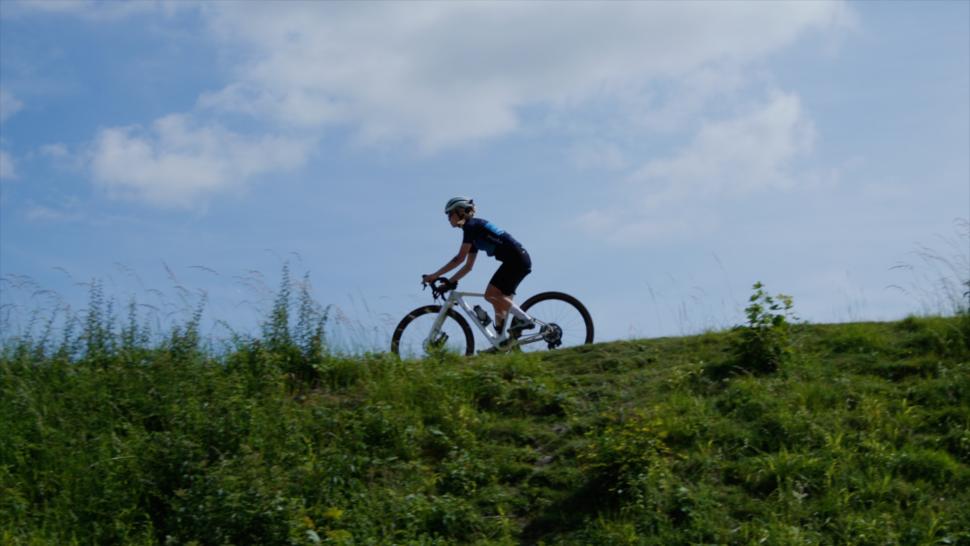

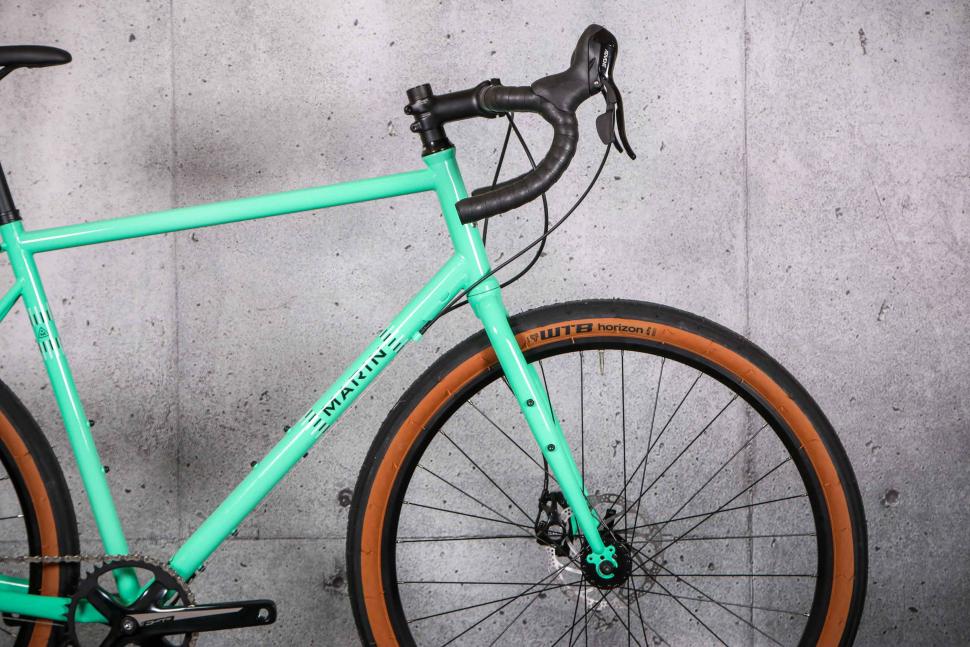

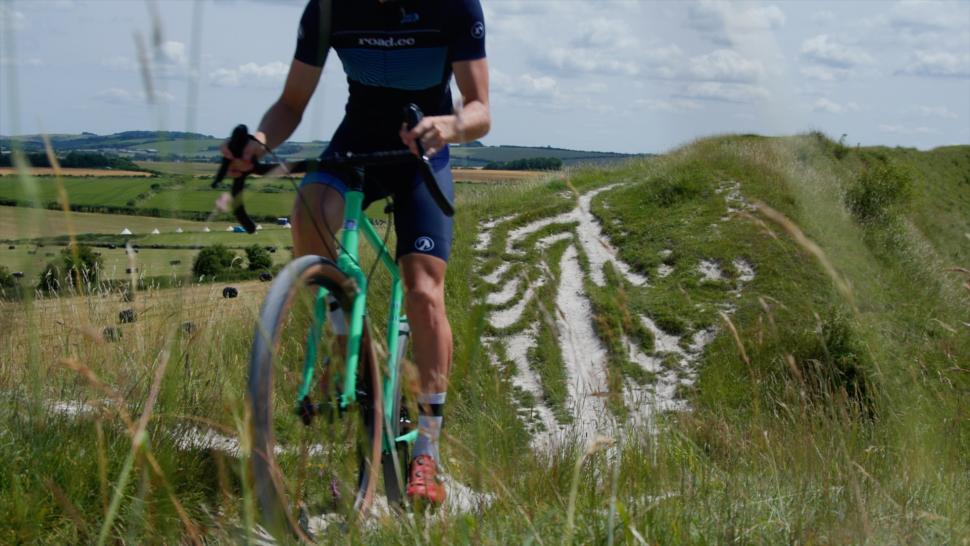
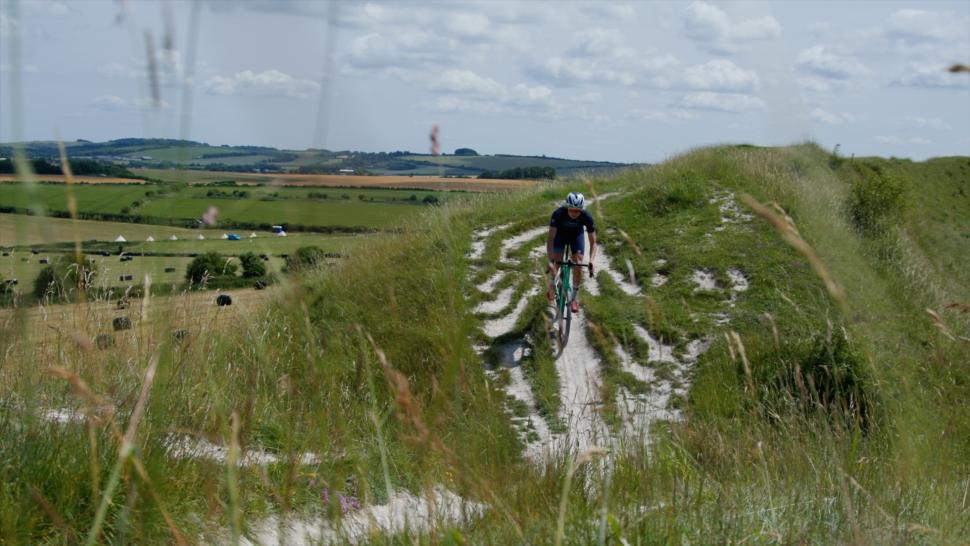
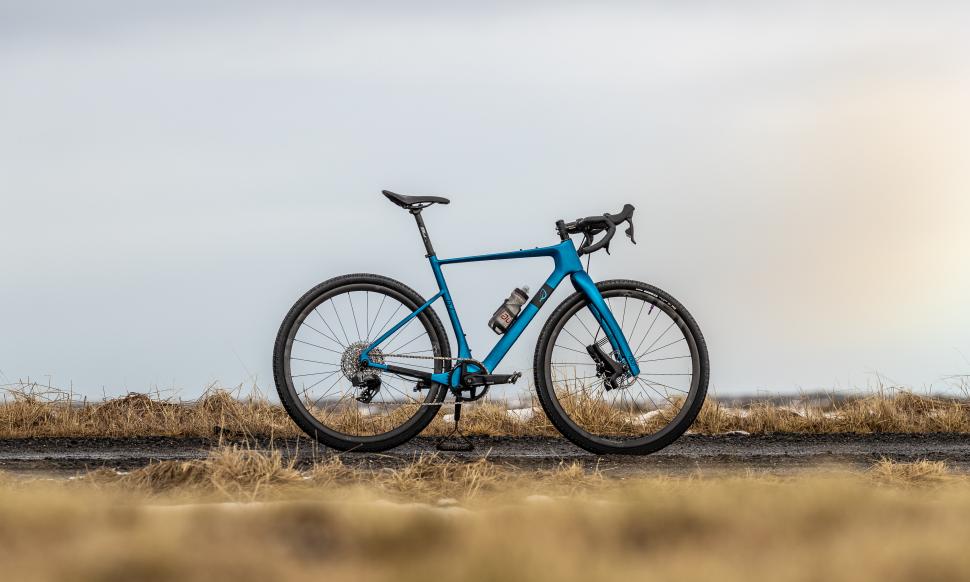
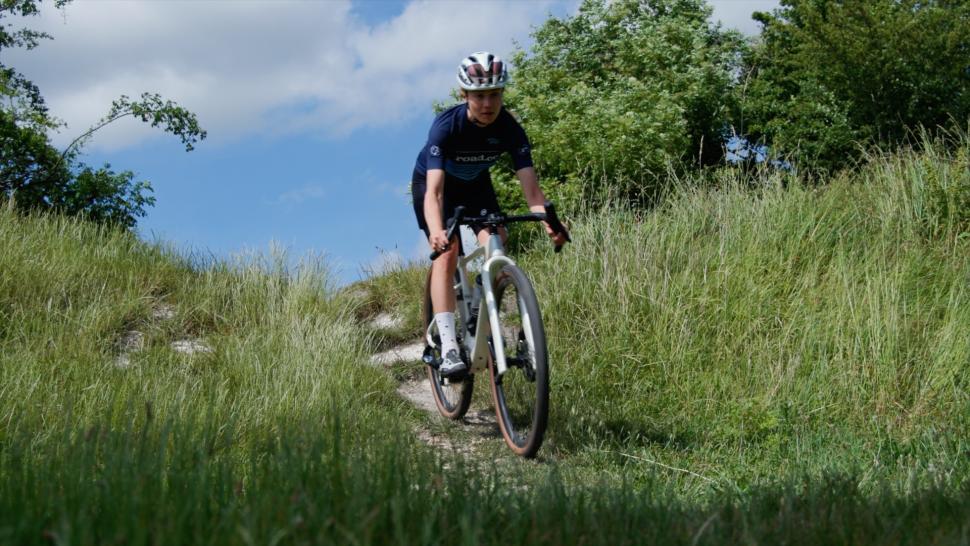
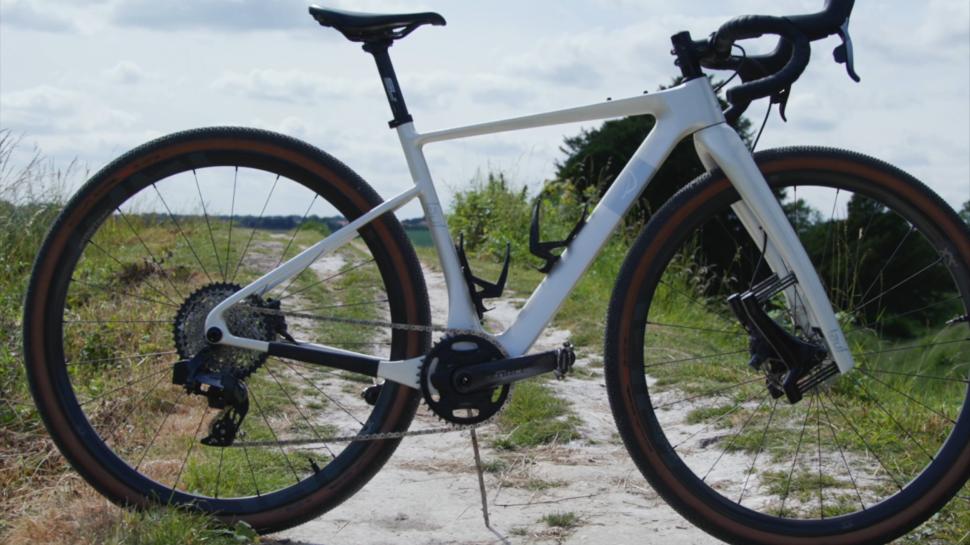
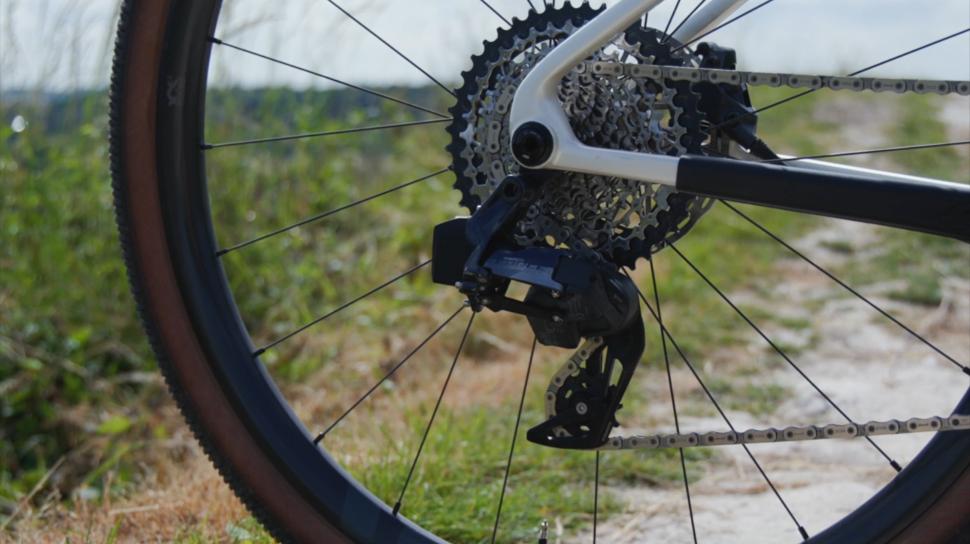
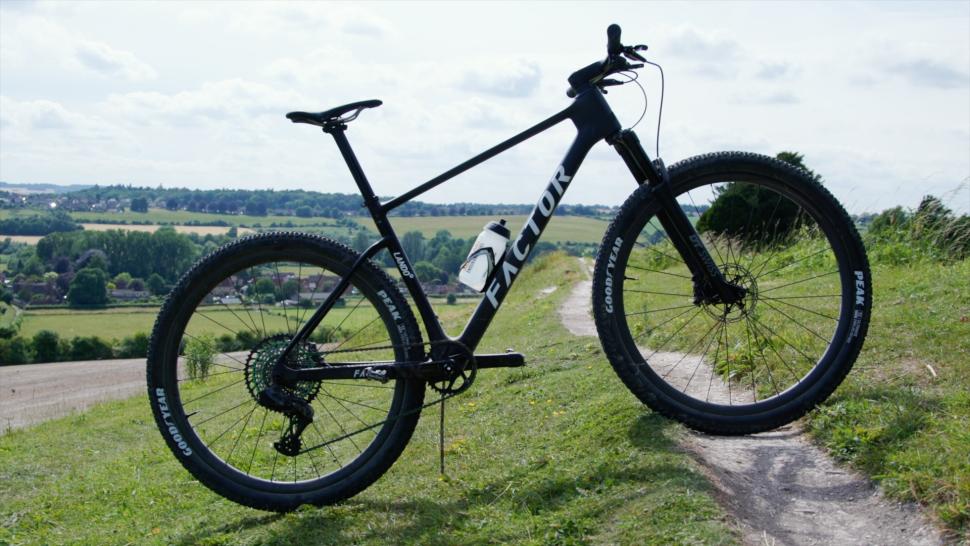
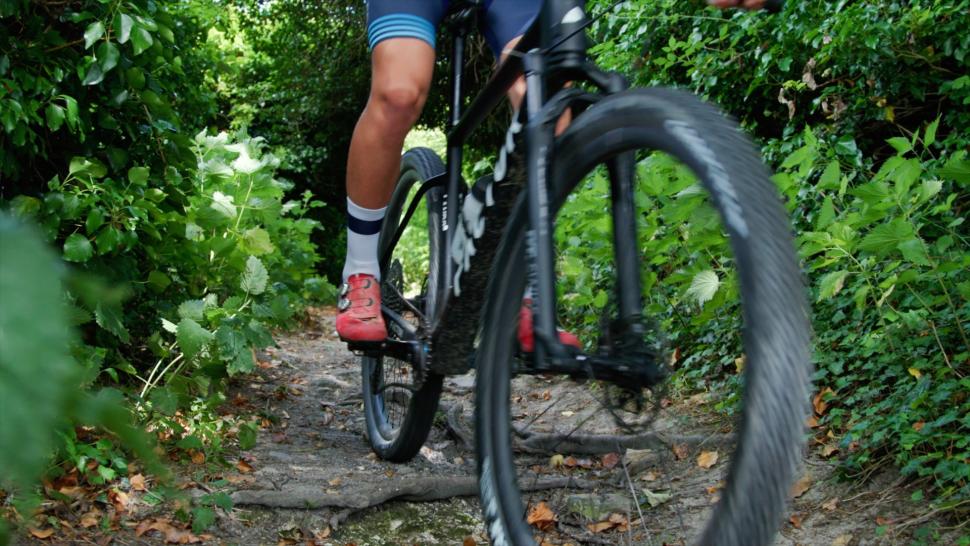
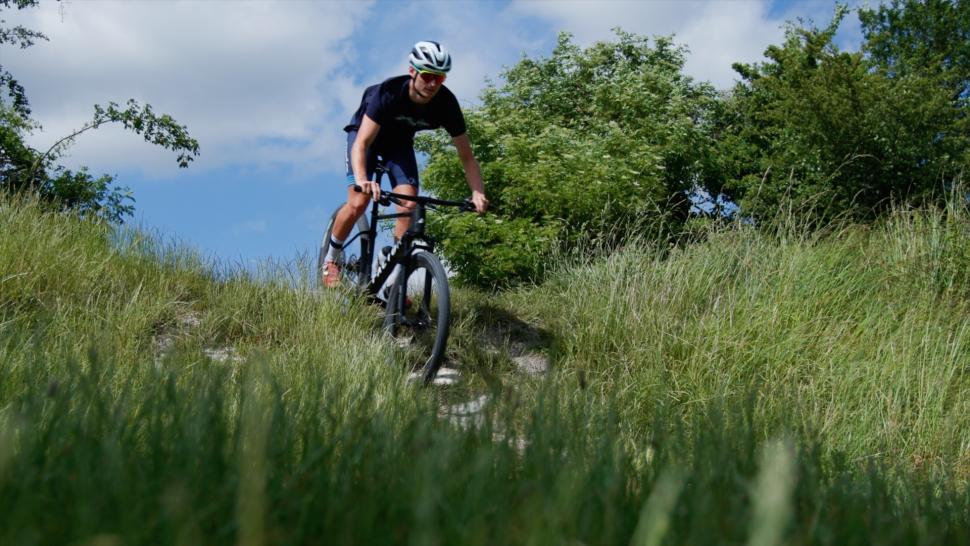
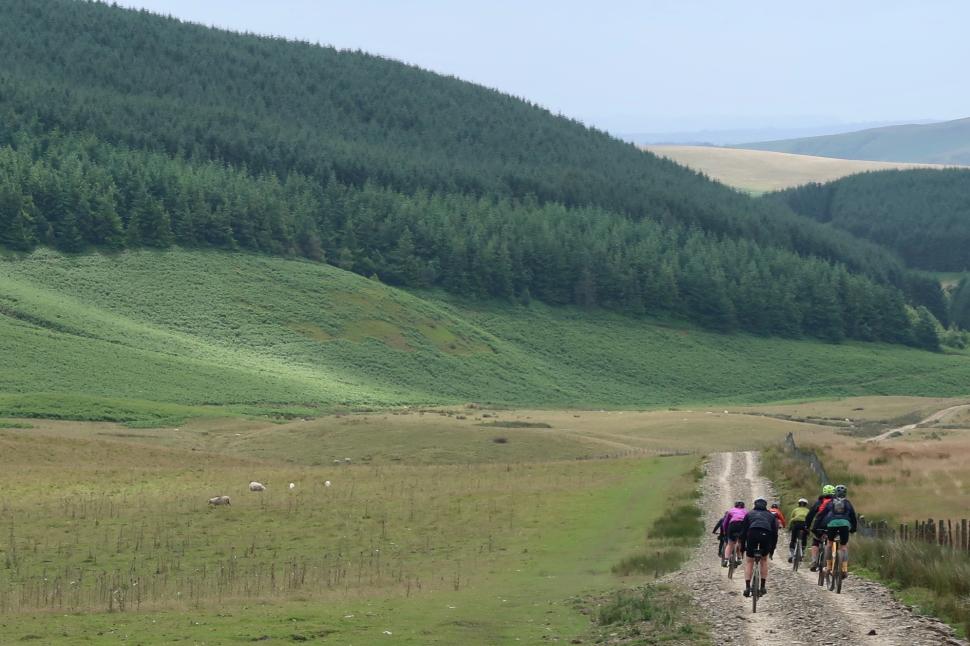
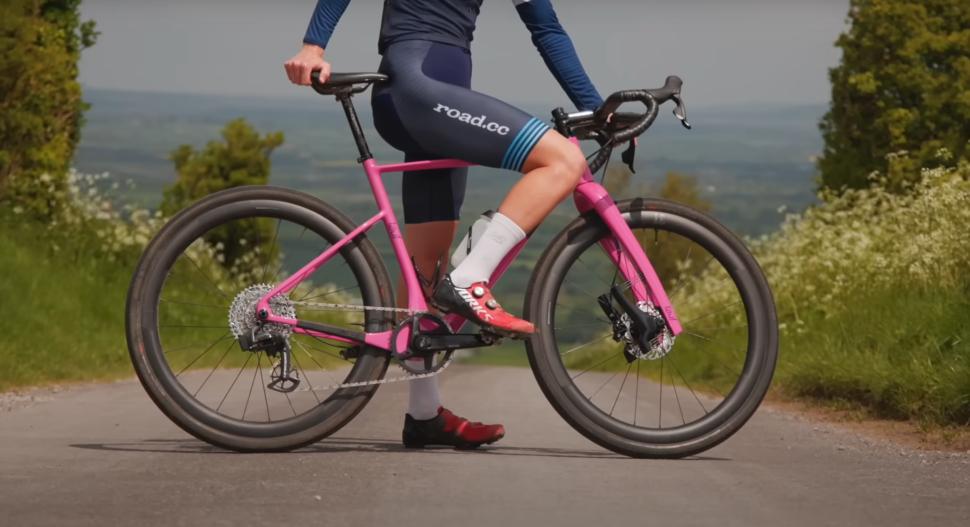
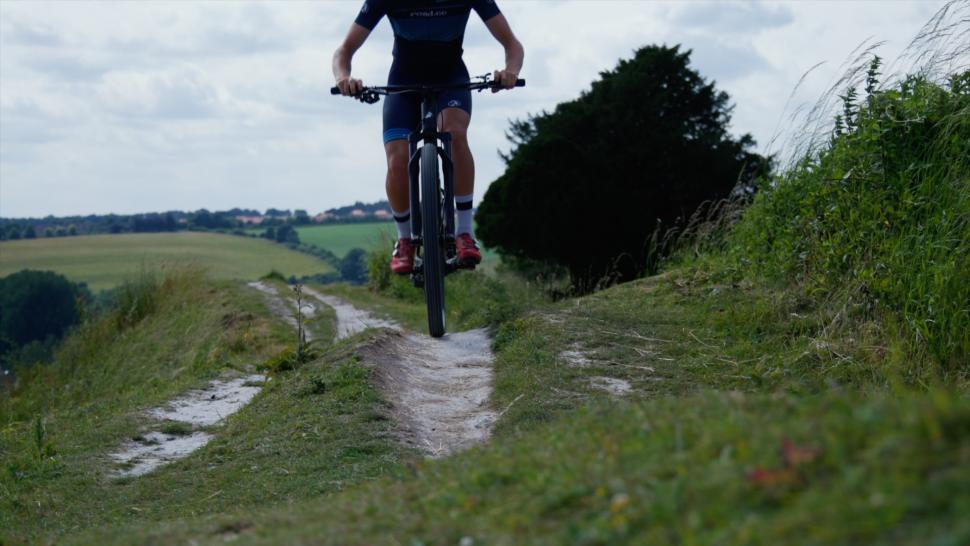

Add new comment
3 comments
I think comparing an entry specced Ribble Gravel AL and a top specced Ribble Gravel SL, or bikes from any other manufacture who does the same bike in different materials, would have been a much better comparison
Lots of ideas to build your own here.
Interesting the huge gulf between the pricing..... plenty of good bikes in between the gravel bikes. A week ago 3 guys took to the Old Chalk Way, I had prepped two of the bikes out of the three. As we all know Saturday 15th July was a shocker, rain all day so bear that in mind, back to my main comment, these two bikes I prepped were on Cable brakes, one disc and one cantilevers. The other bike was hydraulic disc brakes I am told. The Hydraulic front brake failed during the ride, the cantilever made no brake adjustments and the BB7 cable brake was dialed in a couple of times and the front pads were almost at the backing at the end. The two bikes I prepped were former CX bikes and to be honest came through it well. Obviously the chalk, wet and the sand was like a grinding paste on the chain but other than that these guys rode the 358 miles plus end to rail station and final rail station to home with just a couple of punctures, hydraulic brake failure on one bike and some half worn chains. To be honest when the Microshift Sword is released that will be a game changer and the "budget" or so called "entry level" will be lifted to another level. Ride Safe